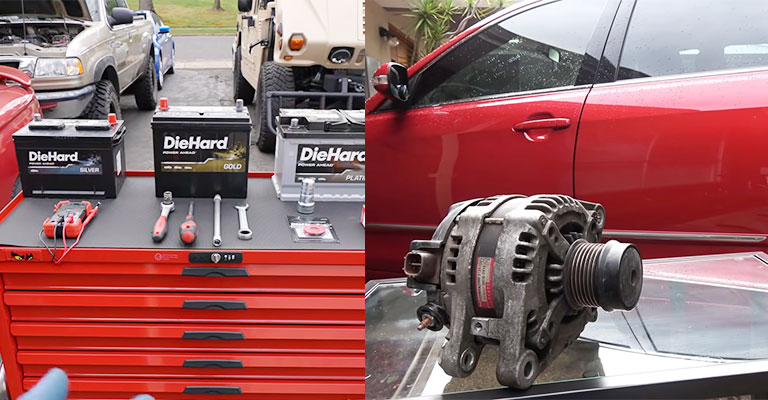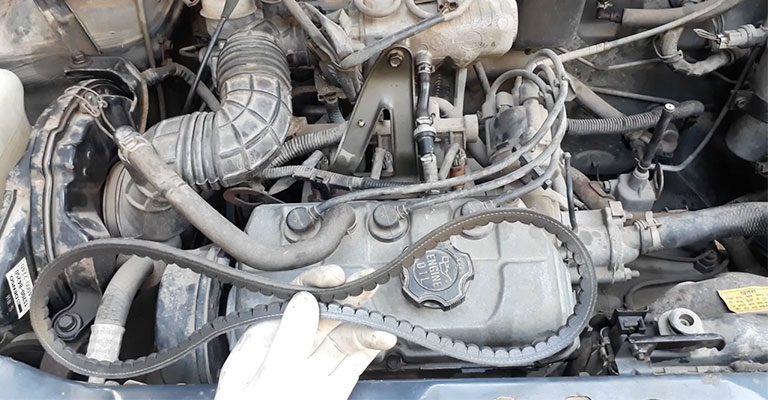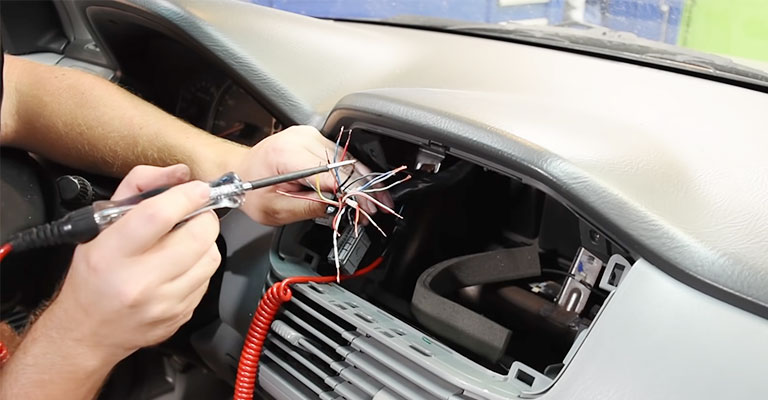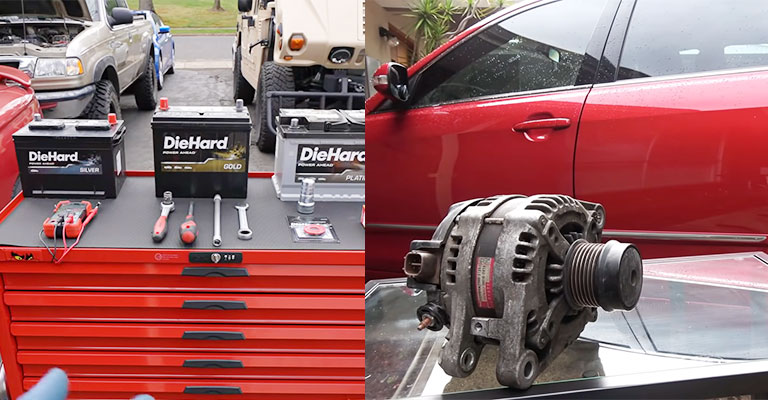The automotive gauges have one goal: to provide you with all the essential information. That includes the vehicle’s speed, fuel, temperature, and performance. In other words, these gauges help the drivers to understand whether their car is operating optimally or not.
Now, if you notice flickering on the gauges, it generally is not good news. And it would be pretty normal for you to ask why my car won’t start gauges flutter.
Well, generally, the issue will be with the alternator or battery of the vehicle. It is a pretty typical electrical problem that can happen to both new and old cars.
So, how do you figure out the root cause of the issue and fix it? If you want to learn that, you will need to stick with this guide until the end!
Why Are the Gauges Moving While the Car Is Off or When You Start the Car?
There can be several reasons why the gauges might go crazy when the car is off or when you start the vehicle. However, generally, these are the reason why:
Battery and Alternator Issue

In most cases, problems present on the battery and the alternator will make the gauges flicker.
Faulty Electrical Systems
If there is no problem with the battery and alternator, the fluttering issue can be for faulty electrical systems. They might be drawing too much power.
Grounding Issues
Electrical malfunctions, including an incorrect voltage and current supply, can cause the gauges to flicker. Short circuits that are within the wiring can also contribute to the issue. Basically, this falls under grounding issues.
The issue with the Alternator Belt

When the alternator belt breaks or slips, it might drain the battery excessively. Eventually, it will lead to the misfiring of the spark plugs. You might also face issues with other electrical components.
Old Gauges and Calibration Issue
Sometimes, the issue might be with the gauges themselves. They might be old and might require calibration.
How do Fix the Battery and Alternator-Related Gauges Fluttering Issue?
As we have mentioned earlier, the reasons why the gauges go crazy when you are trying to start the car are generally the alternator and battery. And if you want to get the issue fixed, you need to go through these steps:
Step 1: Check the Wiring and Connections

Before anything else, you will need to take a look at the connections and the wiring of the battery and alternator. Check whether they are in good shape or not. If you notice any visible damage to the wiring and connections, you should replace them immediately.
Sometimes, the connection to the gauge might not be secure. That can cause the gauge to get wrong readings or go crazy when your vehicle is starting or off.
Step 2: Put Your Focus on the Battery
If the wiring and connections seem alright, there might be an issue with the car battery. In this case, you should see if the battery is properly in place or not. And check whether there are any signs of corrosion or not. If so, you should get the battery checked by a professional and get the issues fixed.
Step 3: Remove the Battery and Do a Thorough Check
The problem might persist even after getting the connection fixed. On the other hand, you might not see any problems after going through the above two steps. In that case, start disconnecting all the connectors and wires. Clean the connections and terminals with a wire brush to remove anything that is hindering a proper connection.
Step 4: Reconnect the Battery and Let It Charge

After cleaning the terminals and the connection points, put the battery in place and let it charge. But divert your focus to the alternator if the issue is still there. Wondering what the alternator does? Well, it is responsible for providing power to the battery, lights, gauges, and anything electrical that is on your vehicle.
Again, start by checking the connections. See if there are any signs of corrosion on the terminals and wires. If so, clean the corrosion properly with a wire brush. If the issue is still there, you should get the battery and the alternator replaced.
How to Solve Other Issues That Cause the Gauges to Flicker?
As you know by now, there are other things that can make the gauges flutter aside from the battery and alternator. And if the battery and the alternator issues are ruled out of the equation, you should check them up.
Issues with Electrical Systems
You can easily check whether the electrical systems are getting overloaded or not. For this, you will need a multimeter. However, before just holding the prongs on the terminals, you should know the ideal power draw of the vehicles. And for that, you should refer to the manual.
Yes, checking all the electrical components for power draw is a pretty lengthy process. So, if you do not want to carry all these checks on your own, you can rely on your trusty mechanic.
Nonetheless, if there is an issue with the power draw with any of the electric components, you should get it replaced.
Grounding Issues
For this, you will need to look for shorts that are occurring within the wiring connections. Check whether the wires are in the right place or not. If you happen to find an exposed wire or terminal, you need to cover it or get it replaced.
Alternator Belt
You should check the alternator belt if all the electrical components are showing issues or when the spark plugs are misfiring. Check whether it is slipping or if there is any breakage on it. If you do find issues with the alternator belt, get it replaced or fixed by a professional.
Old Gauges
If the vehicle has pretty dated gauges, now would be a good time to replace them. There are loads of advanced gauges in the market. Get a set of those and replace the old ones in your vehicle.
Calibration Is Off
The gauges can go out of calibration over time. And that can surely make them flicker and flutter. But the thing is, calibrating the gauges is not an easy task. So, it would be best for you to leave this task to the professionals. Get your vehicle to your trusty mechanic and tell them to recalibrate the gauges.
Final Words
In short, what would be the answer to the question of why my car won’t start gauges flutter? Usually, it is an issue that involves the battery and the alternator of the vehicle. And depending on the condition of the components, you might just need to secure the wirings and the connections.
Leave a Reply